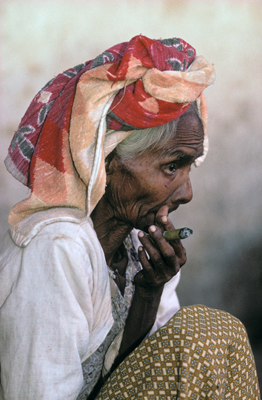 Candid portraiture shots are by definition those that are honest. They are not posed or set up in any way, and have not been changed or influenced by the presence of the photographer. The obvious and usual way to achieve images of this type is to remain unseen by the subject but furtive behaviour, if observed, may produce justifiable adverse reactions in those being photographed. Such consequences are best avoided, particularly where children are involved. Another approach is to integrate yourself into the subject’s environment to such an extent that your presence no longer influences the situation. This obviously requires a great deal of time and patience but may ultimately prove to be more satisfactory.
Candid portraiture shots are by definition those that are honest. They are not posed or set up in any way, and have not been changed or influenced by the presence of the photographer. The obvious and usual way to achieve images of this type is to remain unseen by the subject but furtive behaviour, if observed, may produce justifiable adverse reactions in those being photographed. Such consequences are best avoided, particularly where children are involved. Another approach is to integrate yourself into the subject’s environment to such an extent that your presence no longer influences the situation. This obviously requires a great deal of time and patience but may ultimately prove to be more satisfactory.
The advantage of the candid approach to photographing people is that the images are spontaneous and the problems of self-consciousness and stiffness are avoided. The interactions of people in everyday life are sufficiently interesting and varied to present endless opportunities to an observant photographer.
The key to this sort of work is to be ready seize the moment. People move all the time and their expressions and gestures change constantly. It is therefore important to develop an eye for potentially interesting situations and pause until the optimum moment arrives. Backgrounds are very important. A confused or busy environment distracts the viewer’s eye from the subject, particularly when it is in sharp focus. Try to achieve simplicity, uniformity and muted colours when choosing a backdrop. A wide aperture and good separation between subject and background help by rendering unwanted detail out of focus.
A principal limitation of candid work is that images obtained surreptitiously will lack communication between subject and photographer. This is a key element in good photographs of people so it may be sorely missed. However, profiles can work well, particularly where strong characteristic shapes are apparent. Wherever possible, focus on the nearer eye of the subject and choose the aperture based on the depth of field requirements. Fill-in flash may improve the image by reducing contrast and filling dark shadows, but may also expose the activities of the photographer.